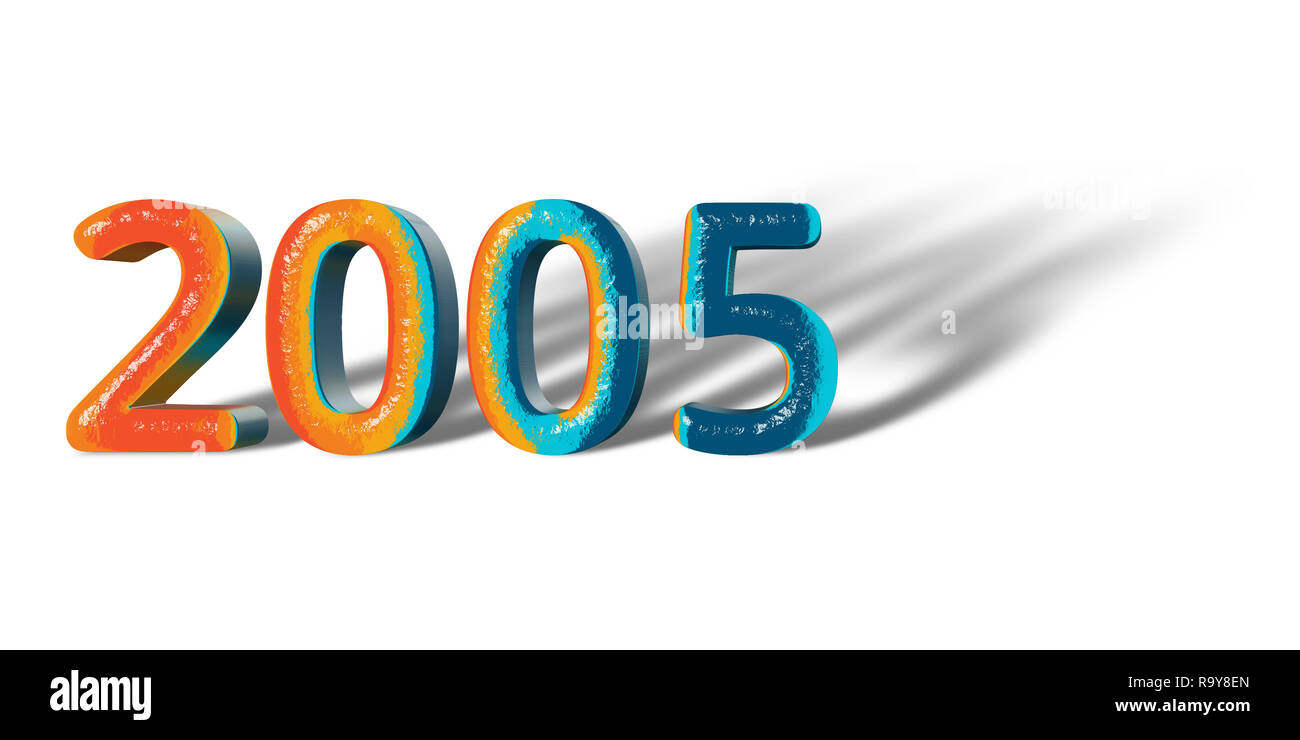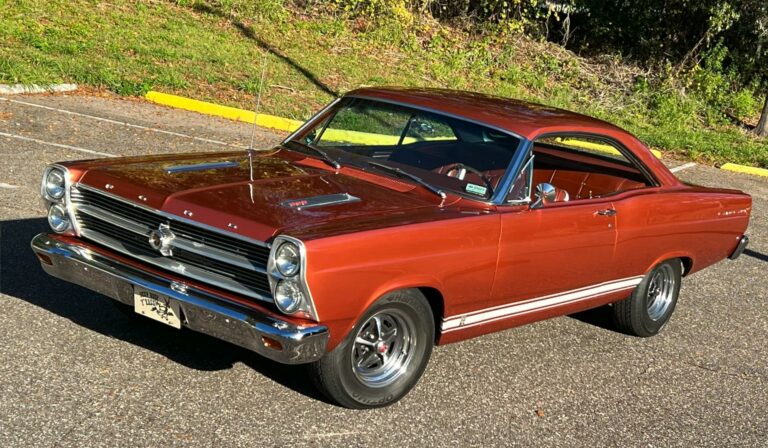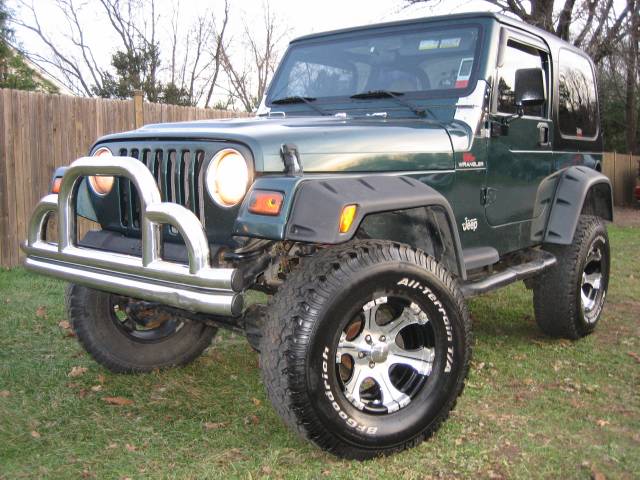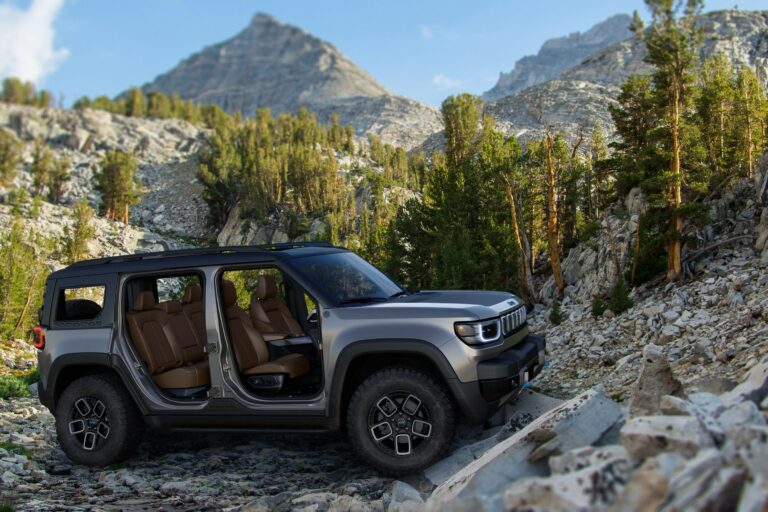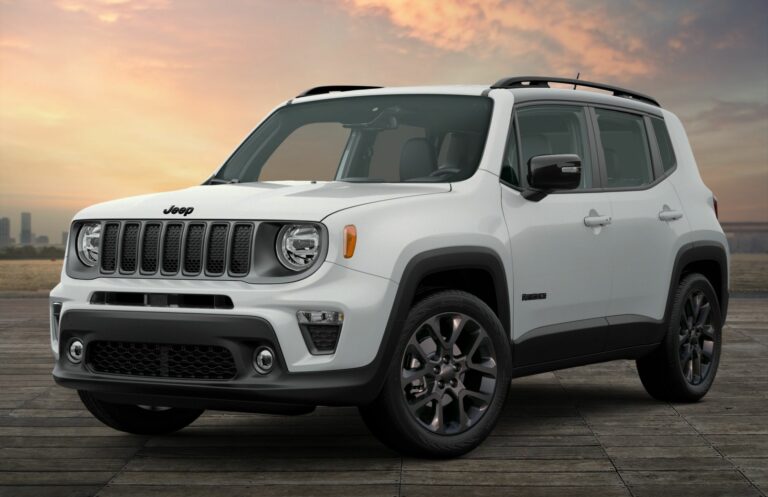2005 Jeep Grand Cherokee Radiator: Your Engine’s Unsung Hero
2005 Jeep Grand Cherokee Radiator: Your Engine’s Unsung Hero jeeps.truckstrend.com
The 2005 Jeep Grand Cherokee, a popular mid-size SUV known for its blend of off-road capability and on-road comfort, relies heavily on a robust cooling system to keep its engine running optimally. At the heart of this system is the radiator – a critical component responsible for dissipating the intense heat generated by the engine. Without a properly functioning radiator, your Grand Cherokee’s engine would quickly overheat, leading to catastrophic damage and costly repairs. Understanding the radiator’s function, common issues, and proper maintenance is paramount for any 2005 Grand Cherokee owner looking to ensure the longevity and reliability of their vehicle.
Understanding the 2005 Jeep Grand Cherokee’s Cooling System
2005 Jeep Grand Cherokee Radiator: Your Engine’s Unsung Hero
To truly appreciate the radiator’s role, it’s essential to grasp how the entire cooling system operates. In your 2005 Grand Cherokee, whether equipped with the 3.7L V6, 4.7L V8, or the powerful 5.7L HEMI V8 engine, the principle remains the same. Coolant (a mixture of antifreeze and water) circulates through the engine block, absorbing heat. This hot coolant then travels to the radiator, a large, finned heat exchanger typically located at the front of the vehicle.
As the vehicle moves, or when the cooling fan activates, air flows through the radiator’s fins, transferring heat from the coolant to the outside atmosphere. The now-cooled coolant then returns to the engine to repeat the cycle. Other vital components in this system include the water pump (circulates coolant), thermostat (regulates engine temperature), hoses (transport coolant), and the cooling fan (provides airflow at low speeds or while stationary). Many 2005 Grand Cherokee radiators also integrate a transmission fluid cooler, which helps maintain optimal transmission temperatures by transferring heat from the transmission fluid to the engine coolant, and subsequently to the atmosphere.
Common Radiator Issues and Symptoms in the 2005 Grand Cherokee
Despite its robust design, the radiator in a 2005 Jeep Grand Cherokee is susceptible to wear and tear over time. Recognizing the symptoms of a failing radiator can save you from significant engine damage.
-
Coolant Leaks: This is perhaps the most common issue. Radiators are often constructed with aluminum cores and plastic end tanks. Over time, these plastic tanks can become brittle and crack due to heat cycles and pressure, leading to visible leaks. Leaks can also occur from corroded aluminum fins, damaged hose connections, or a faulty radiator drain plug.
- Symptoms: Green, orange, or pink puddles under your vehicle (depending on coolant type), frequent need to top off coolant, sweet smell from under the hood.
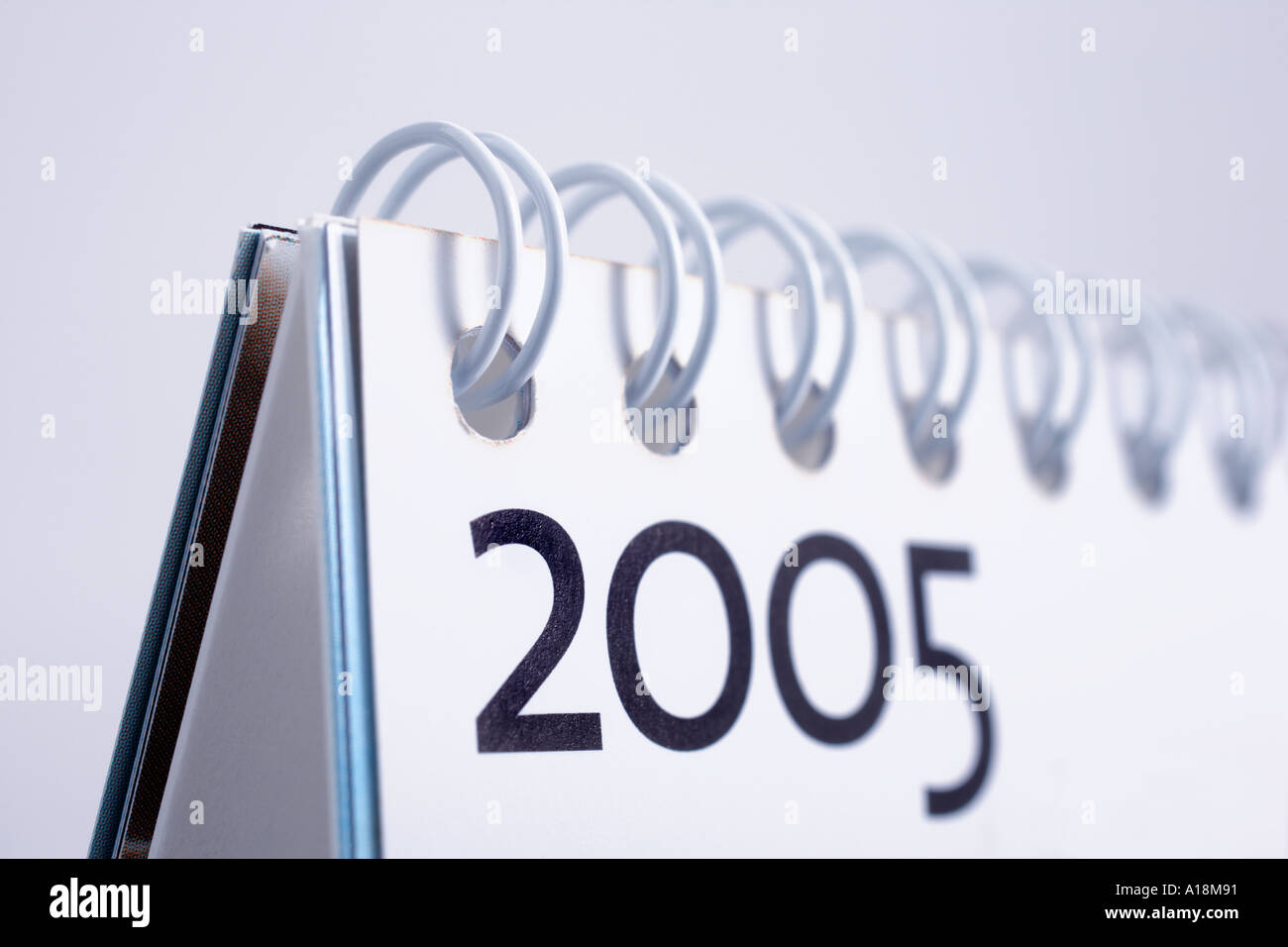
-
Clogging/Blockages: Internal corrosion, mineral deposits from using incorrect water, or debris from a neglected cooling system can accumulate inside the radiator’s tubes. This restricts coolant flow, severely reducing the radiator’s ability to dissipate heat.

- Symptoms: Engine overheating, particularly at idle or low speeds, high temperature gauge readings, poor heater performance (less common for radiator, but possible if flow is severely restricted).

Damaged Fins: The delicate aluminum fins on the radiator can easily be bent or crushed by road debris, stones, or even high-pressure washing. While minor damage might not be critical, significant fin damage reduces the surface area available for heat exchange, impairing cooling efficiency.
- Symptoms: Engine running hotter than usual, especially in hot weather or under load.
General Symptoms Indicating Radiator Problems:
- Engine Overheating: The most obvious sign. Your temperature gauge will climb into the red zone.
- Low Coolant Level: If you consistently find your coolant reservoir low, even without visible leaks, it could be evaporating due to overheating or there’s an internal leak.
- Steam from Under the Hood: A clear sign of severe overheating and potentially boiling coolant.
- Discolored or Sludgy Coolant: Indicates internal corrosion or mixing of incompatible coolants, which can lead to clogs and reduced heat transfer.
Diagnosing Radiator Problems
Before jumping to conclusions, a systematic approach to diagnosis is key:
- Visual Inspection: With the engine cool, check for visible signs of coolant leaks around the radiator’s plastic tanks, hose connections, and core. Look for bent or clogged fins.
- Coolant Level and Condition: Check the coolant level in both the reservoir and the radiator itself (when cold). Note its color and consistency. If it’s murky, rusty, or has debris, a flush might be needed, or it indicates a larger problem.
- Pressure Test: A professional can perform a cooling system pressure test. This involves attaching a hand pump to the radiator fill neck and pressurizing the system. A pressure drop indicates a leak.
- Temperature Gauge Monitoring: Pay attention to your dashboard temperature gauge. If it fluctuates erratically or consistently runs high, investigate further.
- Fan Operation: Ensure your cooling fan engages when the engine gets hot or when the A/C is on. A faulty fan can cause overheating even with a good radiator.
Maintenance and Prevention Tips
Proactive maintenance is the best defense against radiator failure and costly engine repairs for your 2005 Grand Cherokee.
- Regular Coolant Flushes and Changes: Follow Jeep’s recommended service intervals, typically every 5 years or 100,000 miles, or sooner if the coolant appears dirty. Using fresh, clean coolant prevents corrosion and deposit buildup.
- Use the Correct Coolant: The 2005 Jeep Grand Cherokee generally requires Mopar-approved HOAT (Hybrid Organic Additive Technology) coolant, typically dyed orange or sometimes purple. Using the wrong type can lead to chemical reactions, sludge formation, and premature component failure.
- Inspect Hoses and Clamps: Periodically check all radiator and heater hoses for cracks, bulges, or softness. Ensure clamps are tight and free of corrosion.
- Check Radiator Cap: The radiator cap maintains pressure within the system, raising the boiling point of the coolant. A faulty cap can lead to coolant loss and overheating. Replace it if the rubber seal is cracked or it doesn’t hold pressure.
- Keep Radiator Fins Clean: Gently remove leaves, bugs, and other debris from the front of the radiator using a soft brush or compressed air (low pressure, directed away from the engine). Avoid high-pressure washers directly on the fins.
- Address Minor Issues Promptly: Don’t ignore minor coolant leaks or slightly elevated temperature readings. A small problem can quickly escalate into a major one.
Radiator Replacement: A DIY Guide vs. Professional Service
Replacing a radiator in a 2005 Jeep Grand Cherokee is a moderately challenging DIY task. While it can save on labor costs, it requires specific tools, some mechanical aptitude, and adherence to safety protocols.
DIY Considerations:
- Tools Needed: Drain pan, socket set, wrench set, pliers, screwdriver set, funnel, coolant, safety glasses, gloves, torque wrench (for some bolts).
- Basic Steps (Always consult a service manual for precise steps for your specific engine):
- Safety First: Ensure the engine is completely cool. Disconnect the negative battery terminal.
- Drain Coolant: Place a drain pan under the radiator and open the draincock.
- Remove Components: Disconnect upper and lower radiator hoses, transmission cooler lines (if applicable), and any electrical connectors (e.g., for the fan). Remove the fan shroud and cooling fan assembly.
- Unmount Radiator: Remove the mounting bolts or clips securing the radiator. Carefully lift the old radiator out.
- Install New Radiator: Reverse the removal steps. Ensure all connections are secure.
- Refill and Bleed Air: Refill the system with the correct coolant type. Bleed air from the system by running the engine with the heater on high, and allowing the thermostat to open, topping off coolant as needed.
- Inspect for Leaks: After running the engine and letting it cool, re-check coolant levels and inspect for any leaks.
Potential Challenges for DIY:
- Stuck or Corroded Bolts: Especially in older vehicles.
- Spillage of Coolant: It’s toxic to pets and the environment; proper disposal is crucial.
- Air Pockets: Failing to properly bleed air from the system can lead to continued overheating.
- Damage to New Parts: Mishandling can damage the new radiator or hoses.
Professional Service:
For those uncomfortable with DIY, or if you lack the necessary tools or time, a professional mechanic is an excellent choice.
- Benefits: Expertise ensures proper installation, use of correct parts and fluids, proper disposal of old coolant, and typically a warranty on parts and labor.
- Cost Implications: While you’ll pay for labor, the peace of mind and assurance of a job done right can outweigh the DIY savings, especially for a critical component like the radiator.
Types of Radiators for the 2005 Grand Cherokee
When replacing your radiator, you’ll encounter a few options:
- OEM (Original Equipment Manufacturer): These are radiators made by the same company that supplied Jeep or to Jeep’s exact specifications (e.g., Mopar parts). They guarantee a perfect fit and typically the highest quality, but also come with the highest price tag.
- Aftermarket: These are produced by third-party manufacturers. Quality can vary widely.
- Premium Aftermarket Brands: Brands like Spectra Premium, Denso, and TYC offer good quality, often meeting or exceeding OEM specifications, at a more competitive price.
- Budget Aftermarket Brands: More affordable, but it’s crucial to read reviews and ensure they’re from a reputable seller to avoid fitment issues or premature failure.
Most modern radiators for the 2005 Grand Cherokee will feature an aluminum core with plastic end tanks. While older vehicles might have used copper/brass, aluminum is lighter and more efficient for modern cooling systems. It’s also vital to ensure the replacement radiator includes the integrated transmission fluid cooler if your Grand Cherokee has an automatic transmission (which most do). This cooler is usually located within one of the radiator’s end tanks.
Price Table: 2005 Jeep Grand Cherokee Radiator
The cost of a 2005 Jeep Grand Cherokee radiator can vary based on brand, material, and whether it includes an integrated transmission cooler. Labor costs for installation will be separate.
| Type/Brand Category | Material | Estimated Price Range (USD) | Notes |
|---|---|---|---|
| OEM Mopar | Aluminum/Plastic | $300 – $600+ | Exact fit, highest quality, typically includes transmission cooler. |
| Premium Aftermarket | Aluminum/Plastic | $150 – $350 | Brands like Spectra Premium, Denso, TYC. Good quality, popular choice. |
| Budget Aftermarket | Aluminum/Plastic | $100 – $200 | More affordable, quality can vary; check reviews for reliability. |
| Professional Labor | N/A | $200 – $500 | Varies by region and shop complexity. Excludes parts cost. |
| Coolant (per gallon) | N/A | $20 – $35 | HOAT specific coolant, typically requires 2-3 gallons for a full flush. |
Prices are estimates and can fluctuate based on retailer, promotions, and specific vehicle configuration (e.g., engine size).
Frequently Asked Questions (FAQ)
Q: How often should I replace my 2005 Grand Cherokee radiator?
A: Radiators aren’t typically a scheduled maintenance item for replacement. They are replaced when they fail (leak, clog, or are damaged). However, regular coolant flushes (every 5 years or 100,000 miles) can significantly extend its lifespan by preventing internal corrosion and buildup.
Q: Can I drive with a leaking radiator?
A: It is highly advised not to drive with a leaking radiator. Even a small leak can quickly lead to engine overheating and severe, irreversible engine damage. Pull over immediately if your temperature gauge enters the red zone.
Q: What type of coolant does my 2005 Grand Cherokee need?
A: Your 2005 Jeep Grand Cherokee requires HOAT (Hybrid Organic Additive Technology) coolant, typically orange or sometimes purple in color. Always consult your owner’s manual or a reliable parts store to confirm the exact specification, as using the wrong type can cause serious damage to your cooling system components.
Q: Is it hard to replace the radiator myself?
A: Replacing the radiator on a 2005 Grand Cherokee is a moderately difficult DIY task. It requires basic mechanical knowledge, proper tools, and careful attention to detail, especially when bleeding air from the system. If you’re not confident, professional installation is recommended.
Q: What’s the difference between an OEM and aftermarket radiator?
A: OEM radiators are made by or for the original manufacturer, guaranteeing a perfect fit and original quality. Aftermarket radiators are made by third-party companies. While many aftermarket options offer good quality and are more affordable, some budget options may have fitment issues or lower durability.
Q: How do I know if my transmission cooler is integrated into the radiator?
A: For the 2005 Grand Cherokee with an automatic transmission, the transmission fluid cooler is almost always integrated into the radiator’s end tank. You’ll see two smaller lines (often metal) connecting to the radiator in addition to the larger coolant hoses.
Q: What are the signs of a failing water pump vs. a radiator?
A: A failing water pump often presents with a visible coolant leak from the weep hole (a small hole designed to indicate seal failure), a whining or grinding noise from the front of the engine, or a loose pulley. While both can cause overheating, a radiator issue typically manifests as visible leaks from the radiator itself or poor heat dissipation.
Conclusion
The radiator in your 2005 Jeep Grand Cherokee is more than just a metal box; it’s a vital component that directly impacts the health and lifespan of your engine. Understanding its function, recognizing the early signs of failure, and committing to proactive maintenance can save you from inconvenient breakdowns and expensive repairs. Whether you choose to tackle radiator replacement yourself or entrust it to a professional, ensuring this critical part is in top condition is paramount to keeping your iconic Grand Cherokee reliably cruising down the road for years to come.

